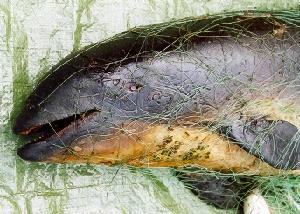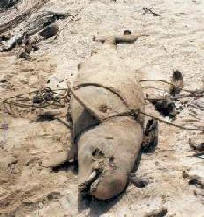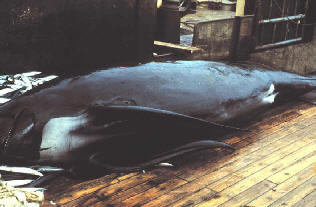|
Some species of cetaceans have already been
pushed to the brink of extinction by bycatch.
In Mexico's Gulf of California, for example,
up to 15 percent of the critically endangered
vaquita population is killed every year in
fishing nets.
With a population of only around 500, the
small porpoise - found nowhere else on Earth
- cannot afford these losses.
Solving the vaquita's problem will not be easy,
but the scientists at Tuesday's press conference
said it should be possible.
"My experience working with fishermen to reduce harbor porpoise bycatch in New England is a good illustration of the challenges and opportunities the network will face," said Scott Kraus, director of research at the New England Aquarium and a member of the new action network.
In the Gulf of Maine during the 1990s, bycatch of harbor porpoise in gillnets was so severe that federal officials were considering placing the population on the endangered species list. A combination of techniques, including use of pingers, temporary fisheries closures and placement of observers on fishing boats, reduced mortality by about 77 percent in just the first year of implementation in 1999, preventing the need for additional federal protection for the species.
"Generally, fishermen want to avoid bycatch for economic reasons, so reducing bycatch is a win-win situation for fishermen and cetaceans," Kraus explained. "But one size fits all solutions will not work and our network is committed to working toward solutions for individual fisheries."
|


